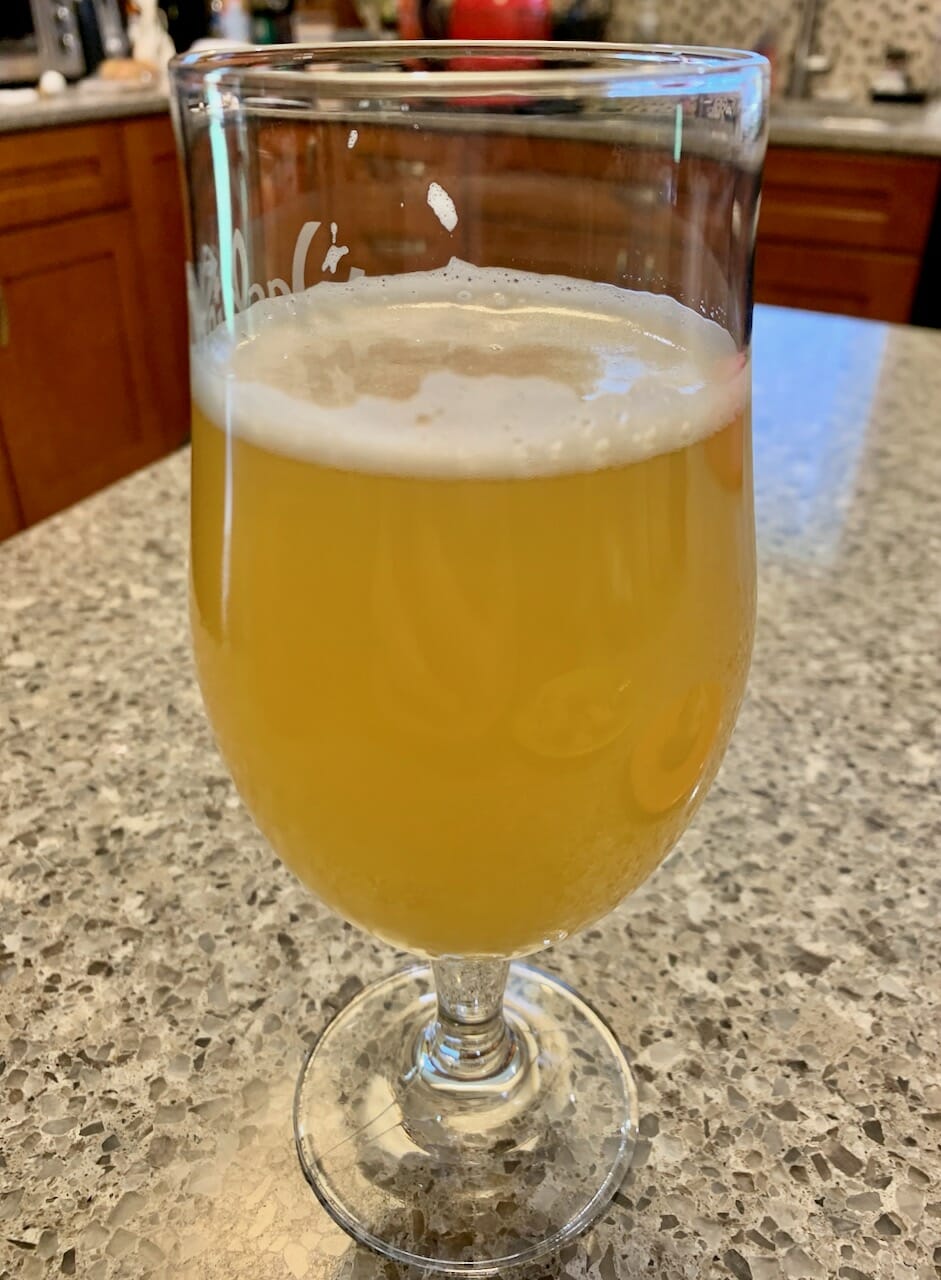
GVBC experiments with Explorer trail series
April 14, 2020
Fitting with Greenbrier Valley Brewing Company’s outdoor themed beers, a new series of experimental beers is planned to commemorate many of the state’s favorite trails. Being released today is the first beer in the new Explorer Series. Each of these small-batch beers will challenge the edges of brewing styles and bring new tastes to the GVBC beer shelf.
Each of the beers will be named for the favorite trail of a different GVBC employee. Today’s release is an experimental tart/brut IPA called Glade Creek Trail, which is Brian Reymiller’s favorite West Virginia hiking trail. Reymiller is GVBC’s director of brewing. Next in the series, look for a sour saison named for Wildcat Ridge Trail located in the Kanawha State Forest. It is GVBC Director of Operations Gary Vermillion’s favorite trail for bike riding. More will follow.
The beers are brewed on GVBC’s 3-barrel pilot brewing system and, currently, will be available only in growlers at the brewery for the duration of the COViD crisis. Once the brewery taproom can open again for regular business, these beers will be served in pints. The Explorer Series is a way for the brewery to test out new and different beers that, if well-received, might be brewed again later as full-run seasonals or one-offs put into distribution.

Glade Creek Trail – The Beer
My neighbor Rich Ireland and I were given the opportunity to taste test the first Explorer beer over the weekend, and we both found it to our liking. “I would definitely drink this,” Rich asserted. I would definitely agree.
While the brewery told us the beer was a Brut IPA style, neither of us would call it that. Glade Creek Trail is definitely a fermentation- driven, Belgian farmhouse-style beer. The yeast they used — Bruxellensis Trois from White Labs — gives a big ester-rich flavor of mango, pineapple, and orange. The selection of Azaca hops, noted for its big tropical fruit character, plays in harmony, but definitely second fiddle to the yeast, to produce a pleasant drinking experience.

“The mouthfeel is great,” says Rich, “with really fine carbonation tickling the tongue. The aroma was dominated by that sort of Belgian farmhouse aroma with no hops in there. The hops are definitely in the back seat somewhere as far as dominance in flavor. They do step out a bit in the middle of the quaff with also that hint of floral. I would call this a solid farmhouse ale. Not so sour at all to me.”
I do pick up a very mild acidity, but definitely not sour. The beer has a very Belgian ester aroma signature — no mistaking it. This is a Belgian-style farmhouse ale. Yeast driven; not hop driven. Intense and tropical. Nice smooth mouthfeel. Low to moderate bitterness, more in the way of contemporary hazy IPAs.
As for it being called a Brut IPA. No, huh uh. Do not drink this beer expecting it to have the clean, austere dryness of the brut IPAs we’ve seen in the market the past couple of years. Glade Creek Trail is well attenuated, but does not come across nearly as dry as an American Brut IPA. Maybe all the tropical esters get in the way of that.

Single-hopped with Azaca
Azaca was the only hop used and most of it was added in the whirlpool or as dry hops during conditioning. Dry hopping is where Azaca shines, releasing its complex flavors of mango, papaya, orange, grapefruit, lemon, pine, spice, pineapple, grassy, tropical fruit, and citrus. If anything, the beer may be overdosed with Azaca. Brewers have noted that when Azaca is used in a beer with a high amount of esters from the yeast that there is a risk of overplaying the fruitiness that Azaca brings to the table.
In an interesting application, a portion of Azaca was also used for first wort hopping. This is an old German technique that has grown more popular in recent years with American craft brewers. The term refers to adding the initial hop addition to the wort in the brew kettle before the wort has begun to boil. The technique produces something like 10% more IBUs than would be expected from the amount of hops added, however, the bitterness extracted in this manner seems less bitter and to have a more pleasant overall taste.
A curious wild yeast
The Bruxellensis Trois yeast has a very interesting story. For years, White Labs thought the yeast was a strain of Brettanomyces, and marketed it as such. Recent detailed lab analysis determined that the yeast is actually a wild Saccharomyces strain.
White Labs literature notes the following: Interestingly, the strain itself displays many properties similar to Brettanomyces yeast: lack of flocculation, pellicle formation, and flavor compound production not typical of any traditional brewing species of Saccharomyces. This was validated through further trial fermentations and and Gas Chromatograph analysis of the resulting beer.
GVBC said that fermentation was started at 75°F through high krausen, then raised to 80°F for strong finish and diacetyl rest. My suspicion is that most of the fermentation happened at the upper end of that range leading to the formation of beaucoup tropical esters.
Keep it up, GVBC
We love seeing brewers attack the boundaries and expand the envelope of the art. It is healthy for our craft beer market to see Greenbrier Valley Brewing experimenting, not resting on past accomplishment but thinking about future directions for the industry.
A special thank-you to Gary Vermillion for the home delivery of the growlers of Glade Creek Trail consumed in this tasting.
When not out selling industrial tank gauges, Rich Ireland works as co-proprietor of Fayetteville’s popular Arrowhead Bike Farm and is an avid biking enthusiast. Rich is the former beer columnist for the Charleston Gazette-Mail.

